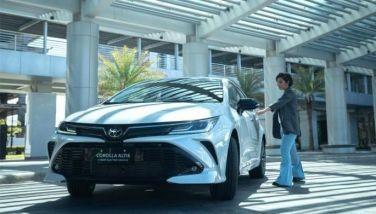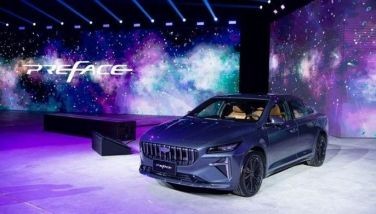Is all this technology making driving really safer?
I was driving the all-new, soon-to-be-released Ford Focus down the 101 in San Francisco last week, enjoying the impressive My Ford Touch with voice command that allows you to do everything from placing and receiving phone calls, selecting your music from your phone’s playlist and streaming it wirelessly through the audio system, and even setting a destination while on the move all by simply talking to the car—when some idiot in a beat up, old pickup cut me off.
Instinctively, I went for the horn and cursed “Go to hell...!” About five seconds later, My Ford Touch replied, “Ok, searching your playlist for all songs by Justin Bieber...”
This got me thinking: I really should delete “Baby, Baby” from my phone because I have no idea how it got there. But also, is all this unbelievable technology really making driving safer?
Don’t get me wrong, we all know that vehicle safety has come forward in leaps and bounds, but what worries me is that the single most important component in the quest for road safety is actually going backwards. Allow me to explain.
In my driving life alone, it started out with ABS and airbags. Then came vehicle stability control, traction control, anti-roll, anti-sway, drive-by-wire throttle and steering, remote engine starting, automatic unassisted parking, adaptive cruise control, pedestrian collision control, night vision, satellite navigation with complete voice command... I could go on. But I think you get the picture.
What I’m getting at is that while all of these have made the vehicle inherently safer and more convenient, humans tend to have this nasty little habit of chewing into those safety margins with their increasingly bad driving habits. Let’s just say that if ABS brakes will allow you to stop your car 10 feet sooner in the wet at 100 kph, most people will now eat that buffer up by driving at 110 kph or traveling two car lengths closer to the car ahead.
Or if the car is fitted with adaptive cruise control, like the Mercedes ML550 that I’m trying out right now that monitors the speed of the car ahead and maintains your car’s speed based on it, a lot of drivers will now use that extra brain power that they would have otherwise spent looking at the car ahead and adjusting their speed manually, to checking their Facebook or Twitter.
It’s a phenomenon, I know. But it happens. It is no different to how we stopped needing to memorize phone numbers fifteen years ago. And it’s only going to get worse, leaving only structural rigidity, airbags, crumple zones and other forms of active safety as the only real tangible steps forward.
But the good news is that while modern science is powerless against engineering a better driver, and God, it seems, stopped trying a while back, the same brains that brought us air-conditioned cup-holders and ventilated leather seats now have the power and technology to engineer them out altogether. And this, I feel, is the future of motoring. And maybe, just maybe, I’ll get to experience it in my lifetime.
Imagine hopping into your car, telling it to take you to work, and just kicking back and checking the news on your iPad, or perhaps catch up with some emails or sports scores. And because it is all computerized, the GPS would be able to tell you exactly how long each journey would be based on the volume of other road users, their average speed, distance to destination, available parking at your destination, etc. No more jockeying for position, abrupt lane changes, cutting in line etc. You would have lost the capability, or more importantly, the incentive. And if you think that’s just too farfetched or way to Jetson’s for you, comfort yourself with the fact that planes have been doing this for exactly 100 years now.
In fact, sometime in the early nineties, a federally supported trial was done north of San Diego on a specially prepared new interstate before it opened, and the big six automakers all developed cars with vehicle-to-infrastructure (V2I) capabilities. The idea was later shelved because it required enormous commitment from both automakers and governments and neither wanted to make the first move.
But enter into the age of the world wide web, and engineers may have found the affordable technology to rekindle the idea. According to the National Manager at Lexus College USA, Paul Williamsen, who is one of the sharpest minds in the automotive industry, cars no longer need V2I, but can run solely on vehicle-to-vehicle (V2V) communication, which is exactly the breakthrough the industry has been hoping for.
The concept would work with 3G or 4G signals, (so long as it’s not Globe, I guess) communicating with surrounding vehicles, GPS, plus drive-by-wire technology that can automatically steer, accelerate and brake for you based on the latest cameras and radars and lane marking technology, as well as intelligence gathering from surrounding vehicles using the cloud.
“By reducing variability of different drivers’ skill, perceptive skills, reaction times, etc., autonomous operation can allow vehicles to form ‘trains’ of vehicles that communicate info about speed, following distance, planned destination and more to increase traffic throughput per lane, reduce accidents, and reduce fuel consumption and emissions of all the vehicles in the ‘train’.” Williamsen shares with me in an online interview.
The dream would be to cover every single street, but realistically, it would be limited to dedicated lanes on highways, or dedicated underground tunnels. “Inter-urban driving still makes more sense allowing drivers to sort through all the variables of access, lane-changing, route planning, and parking, etc.” Paul finishes off.
But try and picture entering the NLEX at Balintawak: After passing the first toll gate, you jump into the automated lane, set Clark as your destination, pop on your cruise control, and for the next 80 or so kilometers, you make yourself a sandwich, get three stars on that tricky Angry Bird level, Skype your mom, whatever... The key factor here, of course, is that, just like the fax machine and telephone, the other guy needs to have one for it to make sense—which would be mandatory, of course, because the vehicle wouldn’t be allowed into the dedicated lane without authenticating its ability to be operated autonomously.
Fascinating stuff. But as the interview wound itself up, me being in a Starbucks in San Carlos, and Paul probably developing a code for time travel somewhere in L.A., I was swept over by a tsunami of mixed emotions.
Because as excited as I am about the idea of safer, lower emission and more efficient road travel, as a car enthusiast, it’s bitter sweet. The end of an era, so to speak. I actually thought long and hard about whether I should even write this piece because it is like a boxing journalist promoting the use of video games instead of real ring fighting simply because it is safer.
Then it hit me.
Every car enthusiast I know loves driving. They just don’t feel the same way about commuting, which is simply a means to an end, much like how a gourmet might look at difference between dining and eating. And that is really all that this technology will replace.
Asides from the fact that you will still have your fair share of long and winding country roads where you can still scratch the itch, man’s love affair with the automobile will never die simply because our cars will be smart enough to drive us, because cars have always been as much about a mechanical expression of our souls as they have been about transportation. Regardless of who or what is behind the wheel.
- Latest

























